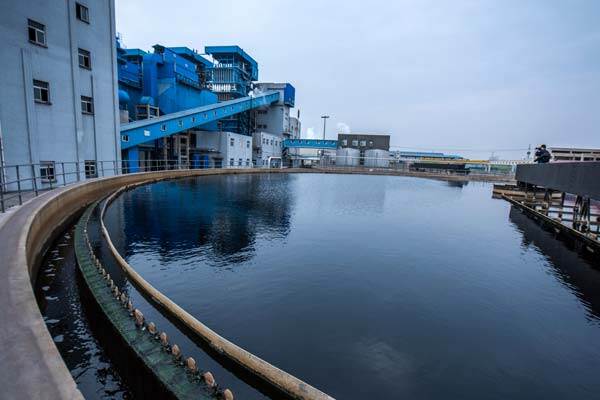4 min read
Benchmarking Water Usage: An Increasingly Important Metric for Pulp and Paper Producers
 Nancy Hasson
:
Jul 8, 2024 12:00:00 AM
Nancy Hasson
:
Jul 8, 2024 12:00:00 AM

The push for eco-friendly, sustainable practices remains a key focus in various industries worldwide. Major corporations like Apple, Starbucks, and Nike have already set ambitious goals to achieve carbon neutrality within the next three decades, inspiring others to follow suit.
While much attention is placed on reducing carbon footprints, the issue of water scarcity is gaining attention as droughts and humanitarian crises highlight the urgent need for water conservation.
Water Scarcity: A Pressing Global Issue
Water scarcity has become a considerable concern, particularly in regions experiencing harsh droughts like parts of the Western US. As the management of water resources grows increasingly critical, companies are now focusing on setting water usage and reduction targets.
Examples of major corporations with proactive stances in addressing water scarcity and working towards a secure water future include:
- Google - The tech giant announced in 2021 its goal to replenish 120% of the average water it consumes in facilities and data centers by 2030. The company is exploring innovative cooling solutions that utilize alternative water sources. Google is also considering leveraging on-site water reservoirs such as treated wastewater and stormwater for various applications.
- Coca-Cola - During the UN 2023 Water Conference, The Coca-Cola Company discussed the company's water-related focus areas and goals. These include achieving 100% circular water use across 175 facilities identified as leadership locations by 2030, working with partners to help improve the health of 60 watersheds identified as most critical for the company's operations by 2030, and aiming to return a cumulative total of 2 trillion liters of water to nature and communities globally, between 2021-2030.
- Kohler - Kohler was recognized with the EPA WaterSense Sustained Excellence Award for the seventh time in 2021, showcasing its commitment to championing water conservation among its clientele and industry peers. Since the inception of its pioneering WaterSense products in 2007, this Wisconsin-based company has preserved an impressive 292 billion gallons of water. It also significantly slashed water and energy expenses by $5.8 billion.
Water Consumption in the Pulp and Paper Industry
Pulp and paper is a relatively water-intensive industry. This is because water is used within about 85% of all three stages of paper production. According to FisherSolve data, the global pulp and paper industry uses roughly 91 million m3 of water per day. Since such a significant amount of water is used in the manufacturing process, large volumes of contaminated wastewater are produced.
Analyzing data through FisherSolve reveals that the Asia Pacific region accounts for almost half of the total water consumption in the industry. Europe and North America account for a significant portion of the remaining water consumption.
Water Volume Used per Day

Source: FisherSolve
Water consumption in the pulp and paper industry poses significant environmental risks. These include the pollution of water bodies and the depletion of freshwater resources. Additionally, the energy-intensive processes involved in treating and transporting large volumes of water further contribute to the industry's carbon footprint.
The image below shows the varying progress made by different countries in improving their water usage practices in recent years. While some have shown remarkable improvements, others have unfortunately even seen increased water consumption levels.
Water Usage in the Pulp and Paper-Making Process by Country

Source: FisherSolve
The pulp and paper industry must prioritize water conservation and embrace sustainable practices to counteract the negative environmental impacts of excessive water consumption. By integrating water-efficient technologies, implementing water management strategies, and actively collaborating with stakeholders, the industry can pave the way toward a greener and more sustainable future.
How to Enhance Your Water Efficiency
As global consumers become more aware of these pressing environmental issues, the importance of corporate responsibility in managing water resources is bound to increase. Similar to how measuring one's "carbon footprint" has become a standard practice, companies will soon be judged on their water stewardship efforts. This concern will become a crucial aspect of companies’ social license to operate in a world increasingly focused on Environmental, Social & Governance (ESG) matters.
The viability of a mill's manufacturing operations is now intricately linked to the transparency of these key ESG metrics. For companies aiming to benchmark their water stewardship practices or those of their suppliers, FisherSolve's water use data can help with just that. FisherSolve reports the volume of water used at every mill, volume per day, or volume per ton of paper produced.
These versatile metrics allow for comparisons across mills, companies, or regions and can be analyzed within the framework of water risk in specific areas. Consumers of pulp and paper products can leverage this data to evaluate and set benchmarks for their suppliers, a factor that is increasingly influencing purchasing decisions in today's market landscape.
ResourceWise's Tools in Use
To get a better understanding of how this works, let's take kraft pulp mills as an example. Pulp is a product that is made in different regions and traded globally, and it is used for a variety of paper grades from tissue to packaging. Because of this diversity and its global nature, pulp is a compelling grade for benchmarking.
Through FisherSolve, one can find accurate data for the total water used at a specific pulp mill, how efficient the mill is in terms of water used per ton of pulp/paper produced, and a water risk assessment for the site in which the mill is located.
In the chart below, we can visualize three pieces of information about global kraft pulp mills: the average water intensity (x-axis), the water risk in the area where the mill is located (y-axis), and the total volume of water consumed at the mill (bubble size). The color of the bubble indicates the region in which the mill is located.
Water Consumption by Mill
.png?width=600&height=374&name=Water%20Risk_Usage%20by%20Region%20(1).png)
Source: FisherSolve
FisherSolve users can then drill down into the details to evaluate individual mills and companies, which is useful for pulp buyers and competitors alike. In the chart below, we have plotted water intensity data for two major producers of hardwood market pulp.

Source: FisherSolve
From the chart, we can see that the "blue" company's operations are nearly twice as water-intensive as the "orange" company's. Increasingly, as conservation, circular economics, and ESG initiatives drive consumer and corporate behaviors, will the "blue" company be disadvantaged? We think it is only a matter of time until that answer is a resounding "Yes."





